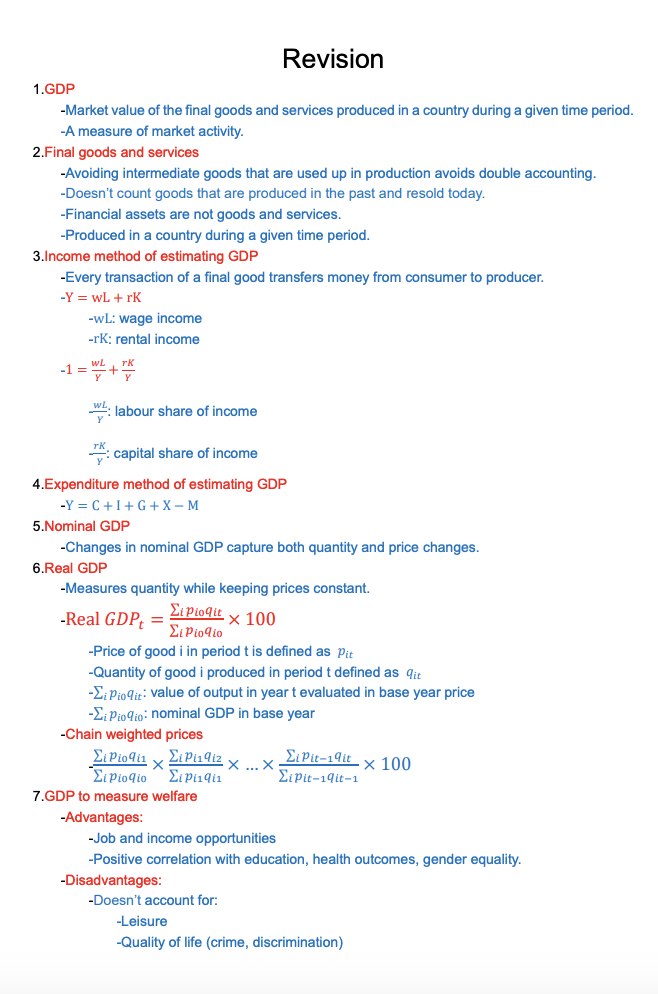ECON10003 Revision Notes
Summary:
GDP refers to the market value of all final goods and services produced in a country during a specific timeframe and indicates market activity. It’s vital to only account for final goods and services to avoid double counting and exclude past produced items resold today, financial assets, and intermediate goods. GDP can be estimated using the income method, highlighting transactions from consumers to producers, and the expenditure method, represented by the equation Y=C+I+G+X−M. While nominal GDP considers quantity and price changes, real GDP focuses on quantities at constant prices, utilizing chain-weighted prices to account for inflation over time. GDP’s welfare measurement has advantages, such as its correlation with education and gender equality, but it also falls short in considering leisure, environmental impacts, and non-market activities. The Consumer Price Index (CPI) tracks the cost of a select basket of goods and services relative to a base year, while inflation measures the rate of price changes over time. Real interest rates, national savings, and profit maximization are key economic indicators, with the former depicting the actual return on investment. The labour force combines employment and unemployment figures, and its effectiveness in an economy can be gauged through the participation rate, unemployment rate, and underemployment metrics. Firms typically aim to maximize profits by balancing labour and capital costs.
Excerpt:
ECON10003 Revision Notes
1. GDP:
- Represents the market value of a country’s final goods and services during a designated period.
- Acts as an indicator of market activity.
2. Final Goods and Services:
- It avoids double accounting by excluding intermediate goods consumed in production.
- Excludes goods produced earlier and resold in the present time.
- Financial assets are not categorized as goods or services.
- Pertains to goods and services produced within a country during a specified period.
3. Income Method of Estimating GDP:
-
- ….
4. Expenditure Method of Estimating GDP:
- ….
5. Nominal GDP:
- Reflects both quantity and price changes.
6. Real GDP:
- Evaluates quantity while keeping prices static.
- ….
7. GDP as a Measure of Welfare:
- Advantages:
- Creates job and income opportunities.
- Displays a positive correlation with education, health outcomes, and gender equality.
- Disadvantages:
- Overlooking leisure, quality of life, environmental impact, and poverty.
- Omits non-market activities.


Reviews